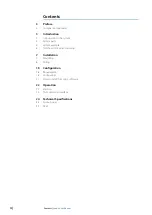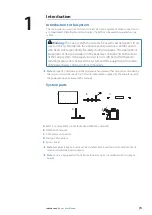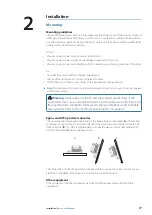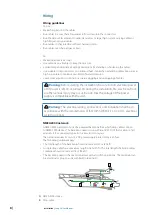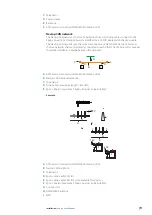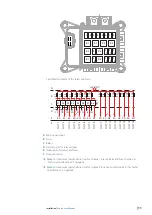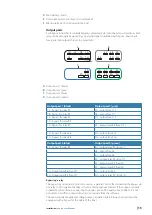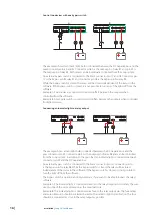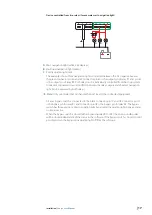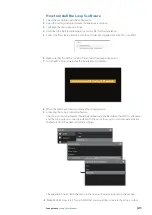
8 |
Installation |
Loop S User Manual
Wiring
Wiring guidelines
Do not:
•
Make sharp bends in the cables
•
Run cables in a way that allows water to flow down into the connectors
•
Run the data cables adjacent to radar, transmitter, or large/high current carrying cables or
high frequency signal cables
•
Run cables so they interfere with mechanical systems
•
Run cables over sharp edges or burrs
Do:
•
Make drip and service loops
•
Use cable-tie on all cables to keep them secure
•
Solder/crimp and insulate all wiring connections if extending or shortening the cables
•
Use suitable crimp connectors or solder and heat shrink when extending cables. Keep joins as
high as possible to minimize possibility of water immersion
•
Leave room adjacent to connectors to ease plugging and unplugging of cables
!
Warning:
Before starting the installation, be sure to turn electrical power
off. If power is left on or turned on during the installation, fire, electrical shock,
or other serious injury may occur. Be sure that the voltage of the power
supply is compatible with the unit.
!
Warning:
The electrical wiring, connections and installation shall be in
accordance with the requirements of ISO 10133, ABYC E-11, AC or DC electrical
system on boats.
NMEA 2000 network
A NMEA 2000 network consists of a powered backbone from which drop cables connect
to NMEA 2000 devices. The backbone needs to run within 6 m (20 ft) of the locations of all
products to be connected, typically in a bow to stern layout.
The network requires its own 12 V DC power supply, protected by a 3A fuse.
The following guidelines apply:
•
The total length of the backbone should not exceed 100 m (328 ft)
•
A single drop cable has a maximum length of 6 m (20 ft). The total length of all drop cables
combined should not exceed 78 m (256 ft)
•
The backbone needs to have a terminator at each end of the backbone. The terminator can
be a terminator plug or a unit with built-in terminator
A
A
A
A
C
C
D
B
B
B
B
E
F
A
NMEA 2000 device
B
Drop-cable




